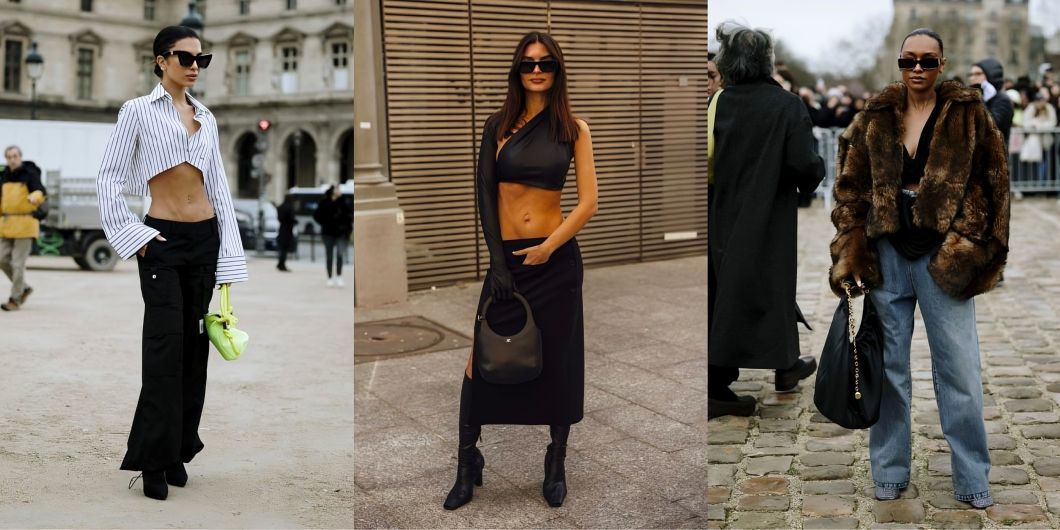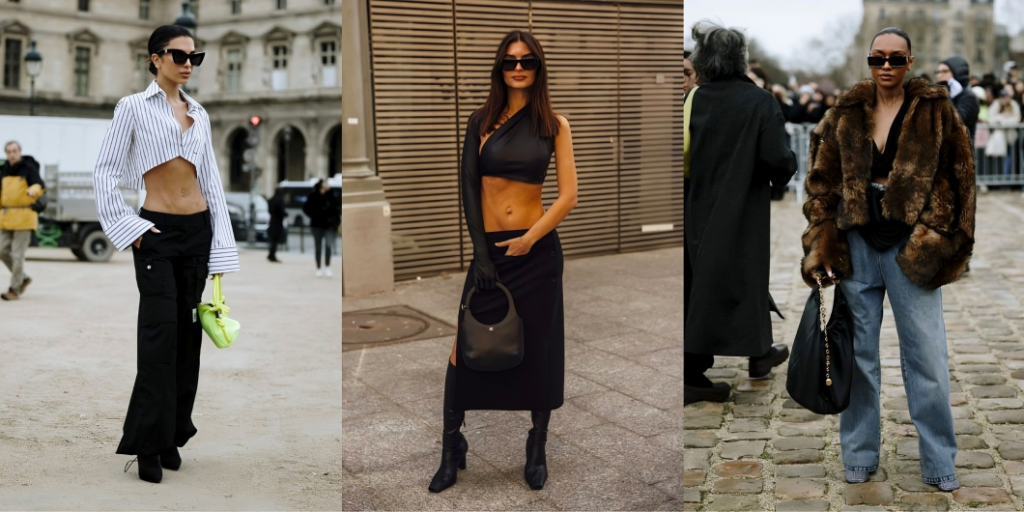Street style
In the fast-paced metropolis of fashion, we invite you to immerse yourself in a vibrant world where the streets become a canvas and individuality is the brushstroke that paints the town red. Street style fashion is not merely a passing trend, but a way of life—a cultural revolution that turns ordinary sidewalks into extraordinary expressions of self.
Imagine a cityscape alive with the rhythmic symphony of footsteps, each one contributing to the urban pulse. Amidst the concrete jungle, fashion becomes a language—a vivid tapestry of colors, textures, and silhouettes that speaks volumes without uttering a single word.
At its core, street style is an act of rebellion. It defies the mainstream and rejects the cookie-cutter molds imposed by society. Instead, it embraces the unique, the unconventional, and the beautifully imperfect. It encourages risk-taking, rule-breaking, and the rewriting of the script on what it means to be fashionable.

Enter this world, and you will encounter a kaleidoscope of influences at play. From the raw authenticity of punk rock to the flamboyant exuberance of haute couture, every style finds its place on the streets. It is a melting pot of cultures and subcultures, where vintage meets modern, high meets low, and tradition meets innovation in a glorious collision of creativity.
Yet, street style is not solely about what you wear—it is about how you wear it. It is the confidence that radiates from every pore, the swagger in your step, and the twinkle in your eye. It is about owning your look, embracing your flaws, and daring to stand out in a crowd of conformity.
In a world where trends come and go in the blink of an eye, street style endures. It is timeless yet ever-evolving, a living, breathing organism that thrives on the energy of the city. It is not dictated by designers or confined to seasons—it is shaped by the people who inhabit these streets, each one a trendsetter in their own right.
And in the era of social media, street style has never wielded more influence. Instagram feeds and TikTok videos have become platforms for showcasing and inspiring the latest street fashion trends.
The Origins of Urban Fashion:
Urban fashion did not originate from glossy magazines or high-end fashion shows—it was actually born from the streets themselves. Its beginnings can be linked back to the countercultural movements of the 20th century, where rebels and nonconformists rejected mainstream ideals in favor of authenticity and individuality.
In the 1950s, the greasers and rockabilly enthusiasts rebelled against the conformity of post-war society with their leather jackets, pompadours, and vintage cars. During the 1960s, the hippies embraced a bohemian lifestyle, dressing in tie-dye, fringe, and bell-bottoms as a way to reject consumerism and war. And in the 1970s, the punks emerged from the underground scene, wearing safety pins, ripped denim, and a do-it-yourself attitude to challenge the status quo.
The Development of Urban Fashion:
Over the years, urban fashion continued to evolve, adapting and transforming with each new trend and cultural movement. In the 1980s, the popularity of hip-hop brought baggy jeans, gold chains, and athletic sneakers to the forefront of fashion, while the rise of the club scene introduced vibrant colors, exaggerated shapes, and avant-garde experimentation.
By the 1990s, streetwear had become synonymous with city culture, as brands like Nike, Adidas, and Supreme capitalized on the increasing demand for casual, comfortable clothing. Skaters, rappers, and graffiti artists became the new style influencers, inspiring suburban youth and city residents alike.
The Influence of Urban Fashion:
Today, urban fashion is more than just a passing fad—it has become a worldwide phenomenon that transcends boundaries, languages, and traditions. From the streets of Tokyo to the boulevards of Paris, fashion enthusiasts from all corners of the globe draw inspiration from the diverse tapestry of city life, remixing and reinventing trends with their own personal flair.
To summarize, street style is not only about looking good, but it also serves as a means of self-expression. It allows individuals to assert their identity and establish their position in society. For marginalized communities, street style can be a powerful tool of resistance, enabling them to reclaim their stories and challenge stereotypes through fashion.
Furthermore, street style has become a lucrative industry, with brands and retailers eager to capitalize on its popularity. High-end designers collaborate with streetwear labels, luxury stores stock limited-edition sneakers, and fast-fashion chains produce affordable versions of the latest trends, blurring the boundaries between high and low culture.
In conclusion, street style fashion is a dynamic and ever-changing force that shapes and reflects our cultural landscape. It celebrates diversity, creativity, and individuality, showcasing the influence of fashion to inspire, empower, and unite us all. So, the next time you step out onto the streets, remember that you are not just getting dressed, but you are also making a statement and contributing to the ongoing narrative of street style.

